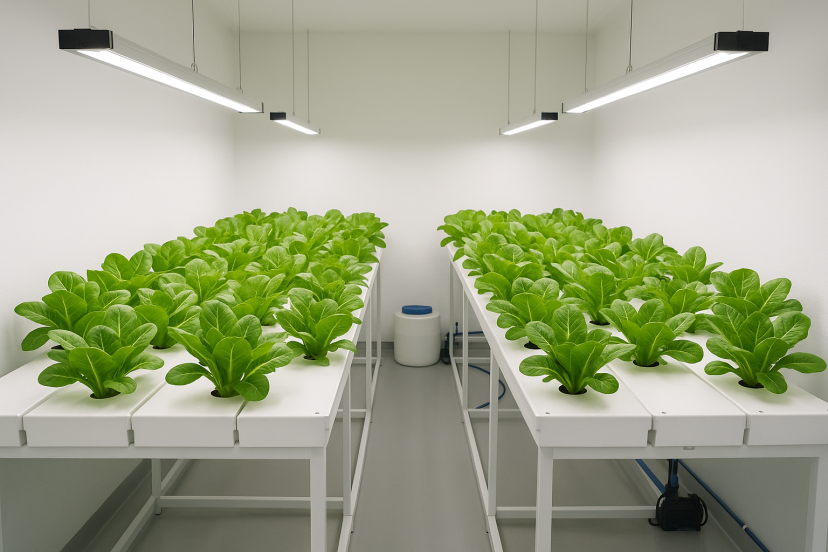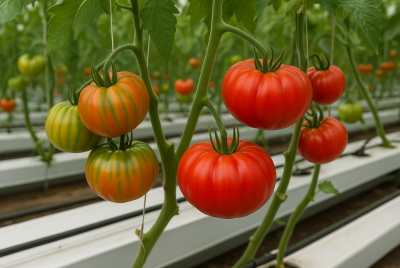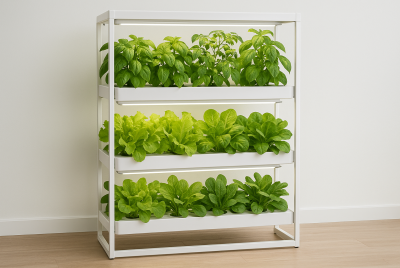How to Clean & Sterilize Your Hydroponic System
We may earn a commission for purchases made using our links. Please see our disclosure for more details.
If you walk into your grow room and see slimy hoses, algae in the tank, or smell something bad, you know there is a problem. In hydroponics, plants do not have soil to protect them. They are more open to what builds up in the water and system. If you do not clean often, salt, germs, and algae can take over and harm the roots. Many new growers wait to clean, but waiting often leads to dead plants and wasted time. The good news is that cleaning and sterilizing your hydroponic system is easy. When you make it a habit, your plants stay healthy, grow better, and give bigger harvests.
Why Cleaning Your Hydroponic System Matters
Unlike soil gardening, hydroponics offers no natural buffer against contamination. Every bit of water and nutrient solution that touches your plants flows through pumps, hoses, and reservoirs. That makes the entire system a potential breeding ground for problems.
Here’s what happens if you neglect cleaning:
- Salt Buildup: Nutrient salts crystallize and cling to surfaces, blocking water flow and altering pH levels.
- Algae Growth: Algae grow quickly in water that gets light and steal oxygen from your plants.
- Pathogens: Harmful fungi like Pythium (root rot) and Fusarium spread quickly in dirty systems.
- Clogged Pumps & Hoses: Debris and slime reduce efficiency and can burn out your equipment.
A study published in Frontiers in Plant Science highlighted that contaminated hydroponic systems lead to reduced oxygen availability, weakened roots, and ultimately lower yields. Another review from the University of Arizona found that lettuce yields increased by more than 20% when systems were sterilized between crop cycles.
Clean systems = healthier plants. It’s that straightforward.
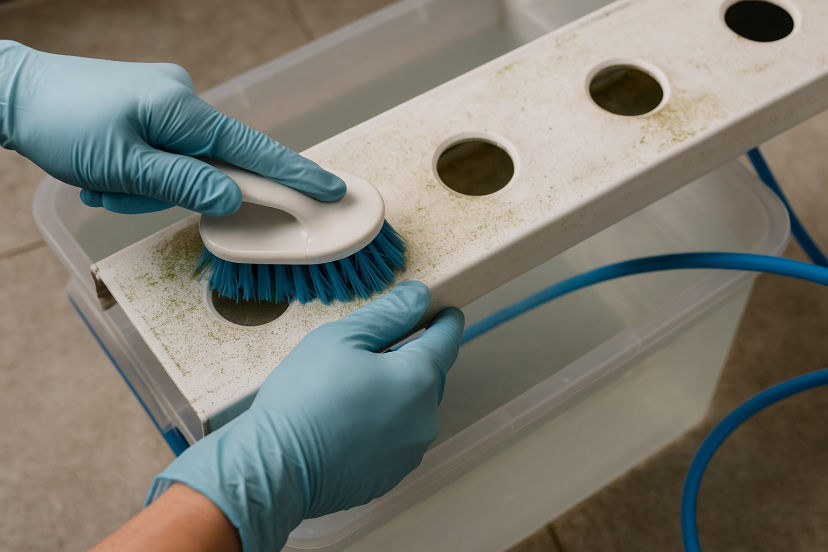
Step-by-Step Guide to Cleaning and Sterilizing
Cleaning your hydroponic system doesn’t need to be complicated, but it does need to be thorough. Follow these steps to keep your setup spotless and disease-free.
Step 1 – Drain and Disassemble
Start fresh by draining your reservoir completely. Don’t leave behind old nutrient solution—spent water carries bacteria, fungi, and decomposed plant matter that you don’t want in your next crop.
Next, carefully remove all plants and growing media. If you’re using rockwool or clay pebbles, decide whether to clean or replace them. Some media can be reused after sterilization, but heavily infested or slimy media should be discarded.
Finally, disassemble your system. Take apart trays, pumps, hoses, fittings, and any removable parts. The more access you have, the cleaner everything will get.
Step 2 – Clean the Components
Each part of your system requires a slightly different approach:
- Reservoir: Use a scrub brush or even a pressure washer for larger systems. Focus on corners and edges where residue builds up.
- Hoses & Tubing: These are hotspots for biofilm. A pipe cleaner or flexible brush helps reach deep inside.
- Trays & Lids: Wipe down with a mild detergent or cleaner before sterilizing.
- Pumps & Fittings: Remove and clean with a toothbrush or small detailing brush. Check impellers for debris.
Tip: If you see chalky white deposits, that’s mineral scaling. A diluted vinegar soak can help dissolve it before sterilization.
Step 3 – Sterilize the System
This is where the real magic happens. Sterilizing ensures every surface is free from harmful microorganisms. You have a few safe options:
- Diluted Bleach: Use less than ¼ capful per gallon of water. Bleach kills nearly all pathogens but must be rinsed thoroughly.
- Food-Grade Hydrogen Peroxide (H2O2): Add 2–3 teaspoons per gallon. This breaks down into water and oxygen, making it a safe choice for hydroponics.
- Commercial Hydroponic Cleaners: Products like EcoClean or Physan 20 are designed for system sanitation.
Allow your chosen solution to sit or circulate for at least 15–20 minutes. For recirculating systems, run the pump to ensure the cleaner reaches every corner.
Step 4 – Rinse Thoroughly
This step is often rushed—but it’s the most important. Residual bleach or peroxide can damage delicate roots when plants return to the system. Use plenty of clean water to rinse every component. For hoses and pumps, run fresh water through until you’re confident all traces of the cleaner are gone.
Step 5 – Dry and Reassemble
Moisture encourages bacteria. That’s why drying is essential before reassembly. Either allow components to air dry completely or wipe them down with a clean, lint-free cloth.
Once dry, reassemble your hydroponic system carefully, checking for loose fittings, leaks, or cracks in tubing. Refill the reservoir with a fresh nutrient mix that has the right pH balance. Let the system run for 24–48 hours with plain water if you want an extra flush before planting.
Regular Maintenance Tips for a Healthy Hydroponic Setup
- Replace Nutrient Solutions Regularly: Every 1–2 weeks is ideal to prevent salt accumulation. If you want to choose the right nutrients for your setup, check out this guide on fertilizer for hydroponics.
- Use Opaque Reservoirs & Tubing: This prevents light penetration and reduces algae growth.
- Clean Filters Often: Dirty filters restrict flow and harbor bacteria.
- Flush Between Crops: Always do a full clean and sterilization before starting new plants.
- Inspect Weekly: Look for slimy residues, algae buildup, or reduced water flow.
5 Cleaning Products for Hydroponic Systems
Here are some Amazon-tested essentials to make cleaning faster and more effective:
- H2O2 Hydrogen Peroxide – A reliable, food-grade sterilizer safe for hydroponic use.
- Hydroponic System Cleaning Brush Kit – Includes flexible pipe cleaners for hard-to-reach tubing.
- Organic Hydroponic Cleaner – Non-toxic, eco-friendly cleaning solution.
- Reservoir Pump Cleaning Tablets – Keeps pumps running smoothly by reducing scale and buildup.
- pH Testing and Maintenance Kit – Essential for restoring balance after sterilization.
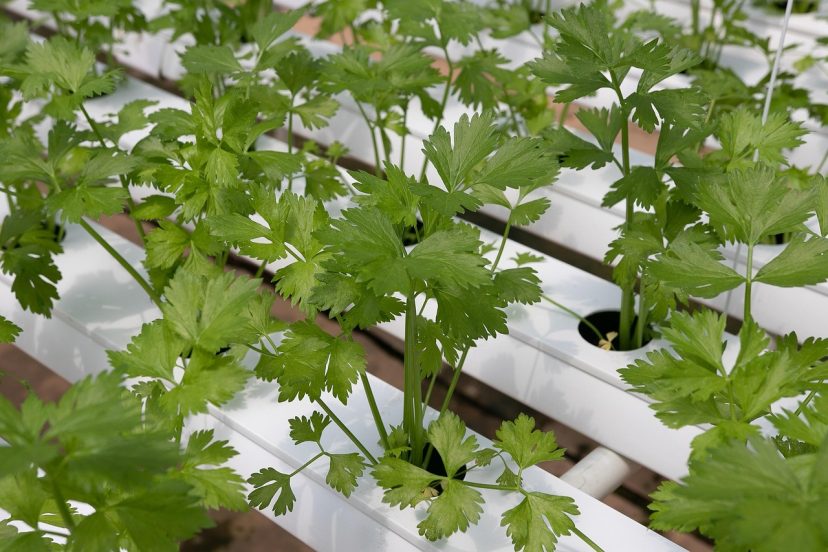
What Science Says About Hydroponic Hygiene
Researchers consistently emphasize that clean systems are productive systems. A dirty hydroponic setup doesn’t just look unpleasant—it creates the perfect breeding ground for diseases that can spread quickly through water. Scientific studies back up what experienced growers already know: sanitation is the key to healthier plants and higher yields.
For example, a study on UV disinfection in hydroponic systems found that sterilizing nutrient solutions drastically reduced the spread of Pythium root rot. This disease is one of the most common and devastating problems in hydroponics, often wiping out entire crops. The research showed that regular sterilization between crop cycles helps control pathogens before they can take hold, giving plants a cleaner environment to grow.
Another research review on hydrogen peroxide sanitization in hydroponics highlighted that hydrogen peroxide effectively lowers bacterial loads without changing the nutrient balance of the solution. This is important because many growers worry that cleaning agents may damage plant nutrition. The study showed that when used correctly, hydrogen peroxide not only disinfects but also breaks down into harmless water and oxygen, making it a safe choice for maintaining system hygiene.
Even practical trials support these findings. The University of Arizona demonstrated that clean reservoirs improved lettuce yields by over 20% compared to unsterilized systems. In simple terms, plants grown in sanitized systems used nutrients more efficiently and developed stronger root systems.
The evidence is clear—investing time in cleaning your hydroponic system boosts both plant health and your bottom line.
Conclusion
Learning how to clean and sterilize your hydroponic system is one of the smartest moves you can make as a grower. By draining, scrubbing, sterilizing, rinsing, and drying, you protect your investment and give your plants the ideal conditions to thrive. Don’t think of cleaning as a chore—think of it as preventive plant insurance. Once you get into the rhythm of maintenance, your system will reward you with healthier roots, stronger plants, and consistently bigger harvests.
FAQs
How do you sterilize a hydroponic system?
Use diluted bleach, hydrogen peroxide, or a commercial cleaner. Let the cleaning solution run through the system for about 15 minutes, then rinse it well.
What is the proper way to clean a hydroponic system?
Drain the reservoir, disassemble all parts, scrub surfaces, sterilize with a cleaning solution, rinse well, dry completely, and reassemble.
Is vinegar safe to use when cleaning a hydroponic system?
Yes, vinegar helps dissolve mineral buildup, but it doesn’t fully sterilize. For pathogens, peroxide or bleach is more effective.
What is the best cleaner for hydroponics?
Food-grade hydrogen peroxide is highly effective, safe, and eco-friendly. It’s often the preferred choice for hydroponic growers.
How often should I do a full clean of my hydroponic system?
Perform a deep clean between every crop cycle and a light clean (solution change and rinse) every 1–2 weeks.

